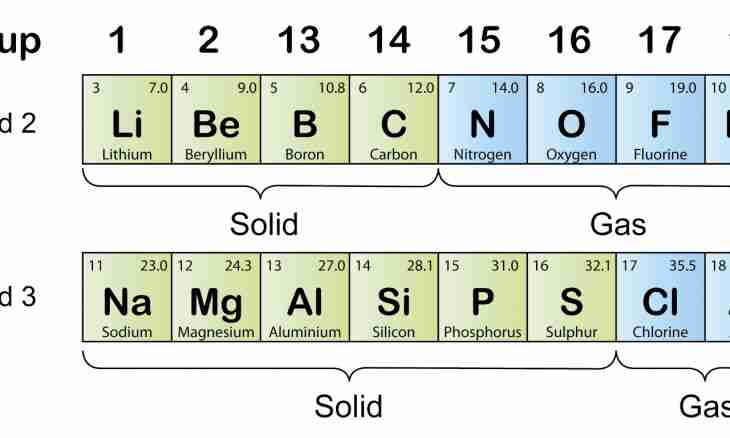Characteristic property of metal elements – ability to give the electrons which are at the external electronic level. Thus, metals reach a steady state (receiving completely filled previous electronic level). Nonmetal elements, on the contrary, seek not to give the electrons, and to accept strangers to fill the external level to a steady state.
If you look in Mendeleyev's Table, then will see that metal properties of the elements which are in one Period weaken from left to right. And the reason for that quantity of external (valent) electrons at each element. The more them, the metal properties are expressed more weakly. The entire periods (except very first) begin with alkaline metal and come to an end with inert gas. The alkaline metal having only one valent electron easily leaves it, turning into a positively charged ion. Inert gases already have completely completed external electron layer, are in the steadiest state – why to them to accept or give electrons? Their extreme chemical inertness is also explained by it. But this change, so to speak, across. And whether there is a change of metal properties down? Yes, is, and very well expressed. Consider the most "metal" metals - alkaline. It is lithium, sodium, potassium, rubidium, caesium, frantsy. However, the latest can be not considered as frantion it is very little widespread. How does their chemical activity increase? From top to down. The thermal effect of reactions increases in precisely the same way. For example, at chemistry lessons often show how sodium reacts with water: the metal piece literally "runs" on a water surface, thaws with boiling. With potassium to make such demonstration experiment already risky: too strong boiling. It is better not to use rubidium for such experiments at all. And not only because it is much more expensive than potassium, but also because reaction proceeds extremely violently, with ignition. What to tell about caesium. Why, for what reason? Because the radius of atoms increases. And the external electron is farther from a kernel, the easier atom "gives" it (that is the metal properties are stronger).

